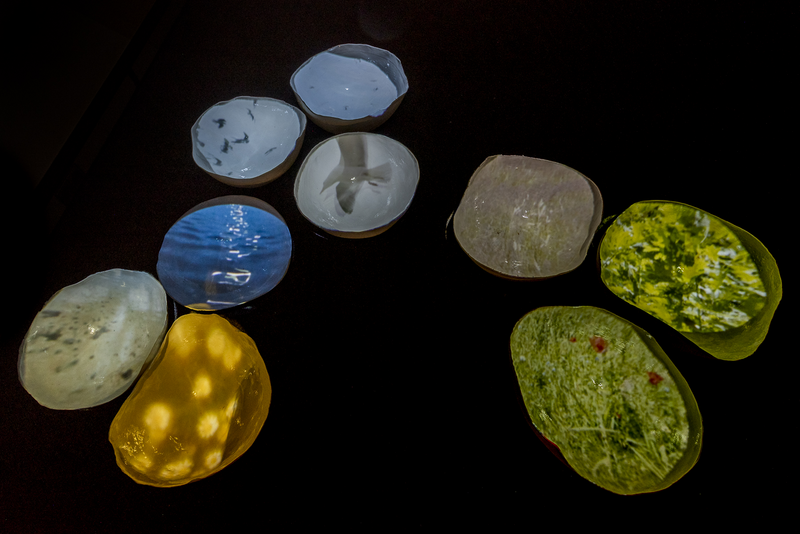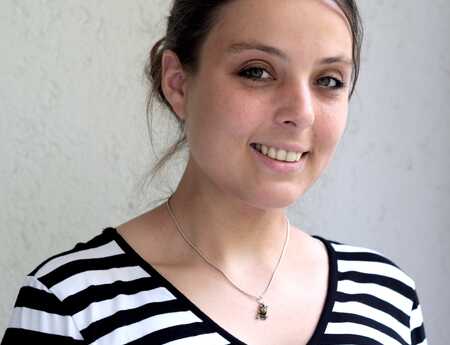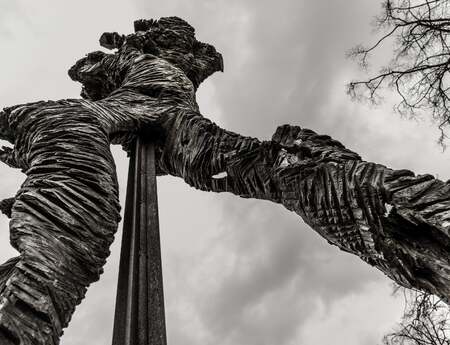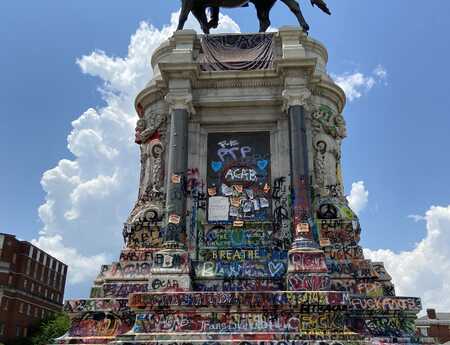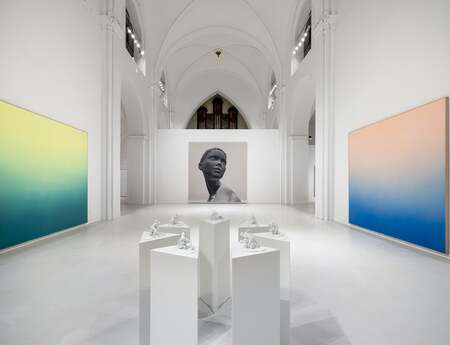Let’s go on an EcoArtventure!
Once a month, we come together on a Monday night for the Sculpture Network Online Club. Last week’s edition “EcoArtventure” featured a repurposed McDonald’s sign, the river IJssel, and a lot of permits.
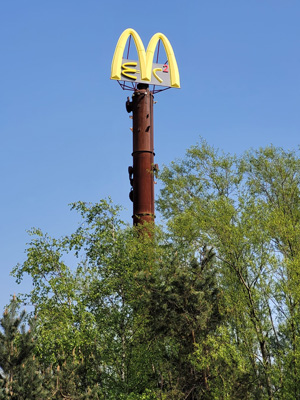
What does a transport company have to do with outdoor art? And how many permits does it take to make an art exhibition happen along 130 km of river? Questions like these inevitably come up when you meet with guests like Tineke Schuurmans of the Verbeke Foundation (BE) and Mieke Conijn of the IJsselbiennial (NL). EcoArt being a cornerstone of both their institutions as well as a major factor in Sculpture Network’s current annual topic “Sculpture and Climate Emergency”, it was only logical to invite these speakers to our Online Club on Monday, 3 July. If you missed out but are curious what a McDonald’s sign is doing in an art space, keep reading – this article will get you up to speed and might even give you an idea for a summer holiday destination.
From transport business to unconventional art collection
Some of the more seasoned members of Sculpture Network might remember the Verbeke Foundation near Antwerp from the XIV. International Forum, which partly took place there in 2016. The event’s topic then (“Sculpting Nature: LandArt, EcoArt and BioArt”) seems like a prequel to this year’s Forum topic (“Sculpture and Climate Emergency”), with the matter gaining in urgency. In spite of these serious issues, which arose various times during the event, we started off the evening a little more light-heartedly with a virtual tour of the Verbeke Foundation, guided by curator Tineke Schuurmans. If you are responsible for an exhibition space as eccentric and unique as the Verbeke Foundation, you will inevitably collect a fair number of mind-boggling anecdotes over the years. Tineke shared a few amusing stories with us – who would have thought that you could sleep in a large intestine here? – but also gave some insights into the philosophy of this less than typical museum and its founder. The Verbeke Foundation started out in the 1990s as the private passion project of Geert Verbeke who owned a transport company at the time. Smitten by collages and assemblages in particular, he focused more and more on collecting contemporary art, until he opened the doors to his very own exhibition space to the public in 2007: fittingly, in the repurposed halls of his former warehouse. Geert Verbeke’s love for industrial objects and transport memorabilia is still visible all over the Foundation’s premises today. Cranes, containers, a moving train, and even a helicopter are incorporated in the concept of the ever-growing outdoor exhibition.
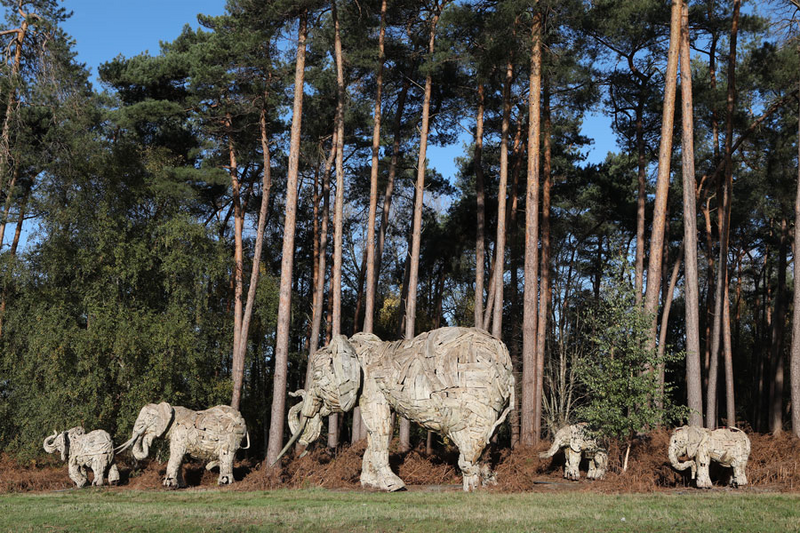
A massive adventure playground
Seen from above, the premises of the Verbeke Foundation might look in disarray or even a little messy: a sculpture here, a container there, a herd of elephants walking the perimeter (Andreas Botha: You can buy my heart and my soul, 2006). This seemingly random arrangement, however, adds to the charm of Geert Verbeke’s world of wonders – who, by the way, doesn’t see himself as its director but rather its concierge. It’s a work in progress rather than a carefully planned-out display, which makes it all the more interesting to explore. Walking among the outdoor artworks, many of them created specifically in or for this space, evokes associations of a giant playground filled with plants and found objects, together forming an unconventional art landscape. But the lack of a traditional “museum feeling” doesn’t come without its problems: With only half a smile, Tineke tells us of people climbing around on their Dome (2008, by Aeneas Wilder) or asking for coffee in the museum, tricked by the monumental McDonald’s sign that is part of Marius Ritiu’s work Science for the Masses (2017). Let’s be honest – who can blame them? After all, the changes made to this found object aren’t apparent at first glance or from afar. As a well-known symbol of capitalism, the choice of this piece is of course deliberate and plays with the expectations of viewers. In fact, many of the sculptures on view in the outdoor area of the Verbeke Foundation incorporate found or repurposed objects or even nature itself. They represent the philosophy of an interconnectedness between art and nature which attracts not only a specific audience but also artists fascinated by this idea. Almost year-round, the foundation welcomes artists in residence to add to the collection. One particularly impressive product of such a partnership is Benoît Christiaens’s El Santo Secreto (2017–2018), a boat made from found materials, which urges the viewer to respect the sea: “El oceano no es una basura” – “the ocean is not a trash bin”. A powerful message which still resonates with us after Tineke has ended her talk and passed the word on to Mieke Conijn of the IJsselbiennial in the second half of our Online Club.
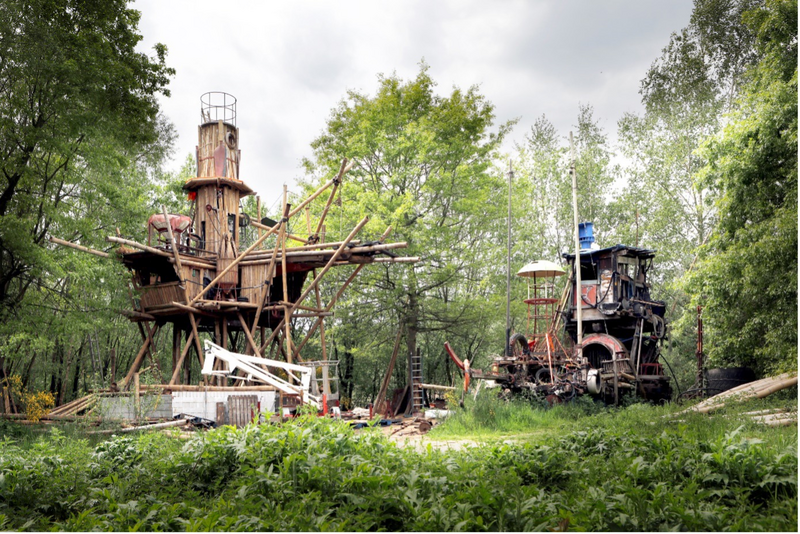
Giving room to the river
Thinking about the Netherlands, the river IJssel might not be the first body of water that comes to mind – first and foremost, we might think of the open sea and the screeching of seagulls. The sea, in fact, plays a major role for life in the Netherlands, Mieke Conijn, founder, curator and director of the IJsselbiennial, informs us right at the beginning of her talk. With a significant part of the country lying below sea level, water management is an essential and even existential part of life here. Up until recently, the solution to flooding was forcing the water as quickly as possible back into the sea. But there’s a limit to how high you can build a dike, and with rising sea levels and more regular heavy rainfalls due to climate change, other solutions had to be found. One of them is giving more room to the river by modifying the landscape around it to allow for a more even distribution of flood water. The massive changes in the landscape due to the project Room for the River were the inspiration for Mieke and her team to come up with the concept of the IJsselbiennial in 2013. This outdoor exhibition along the river IJssel, which had its debut in 2017, explores the question how climate change affects the landscape around us and what our position in this new landscape will be. In 2021, the urgency of this goal was dramatically illustrated when parts of the exhibition were flooded due to extreme high water. This year, the biennial’s third edition focuses on one particular element.
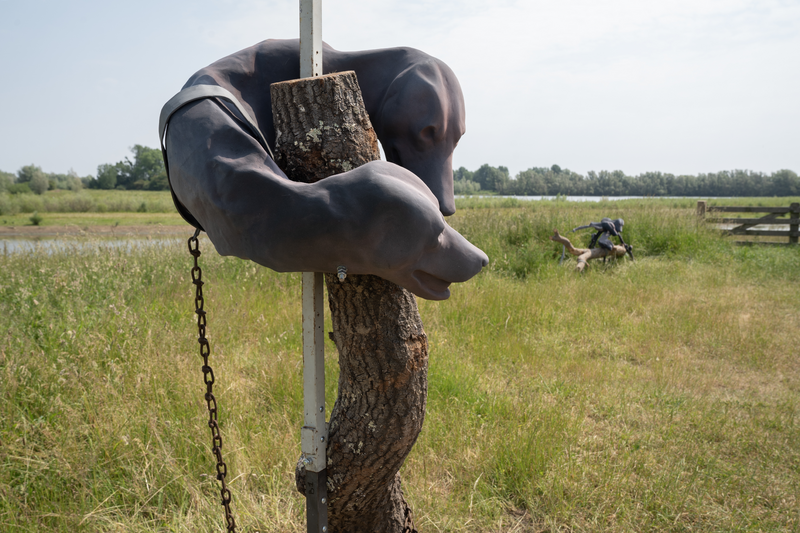
Soil – the basis of life
Human life on this planet would be inconceivable if it weren’t for the earth beneath our feet, allowing us to grow food and resources. In the 2023 edition of the IJsselbiennial, Mieke invited 27 artists to explore this topic and re-evaluate the human relationship to soil and everything connected to it. The 27 artworks were specifically commissioned for this exhibition and their locations carefully chosen – not an easy task if you plan an exhibition along 130 km of river. Mieke and her team were faced with some unique challenges in the process: Not only is a whole stack of permits involved if you want to install artworks on such a big stretch of land (80, to be more specific), but there are also a lot of environmental issues to consider. Not many curators can say about themselves that “scaring off breeding birds before breeding season” was on their to-do list. We saw the photo to prove it! Luckily, in the end the organisers found a spot for every artwork. Until 17 September 2023, they can be seen along the riverbank. If you feel up for it, Mieke recommends a bike tour to take in as much as possible. The variety of styles, concepts, and artists is impressive: from Cameroon to Denmark, from newcomer to late-career professional, from modified floodgate to pure soil as a sculpting material – each and every one of the artworks represents a unique perspective on the topic. Giulia Cenci’s treesome (2023), for instance, creates a palpable mixture of dread and fascination concerning the ever-growing connection between nature and technology with her cyborg animals. After seeing some of these intriguing works in the virtual space, I wouldn’t be surprised to meet a few fellow Sculpture Network fans near the IJssel this summer.
The evening ends with a special treat: Artist and Sculpture Network member Thea van Vliet personally presents her audiovisual installation Monument Earth (2021), which is part of the accompanying program of this year’s IJsselbiennial. With this poetic homage to the beauty of the earth we say goodbye to our speakers and each other, filled with new inspiration and food for thought. We will meet again in this setting on 28 August 2023 when we welcome the Henry Moore Foundation as a new member of Sculpture Network – don’t miss out on this evening dedicated to Henry Moore. To learn more about it click here.
